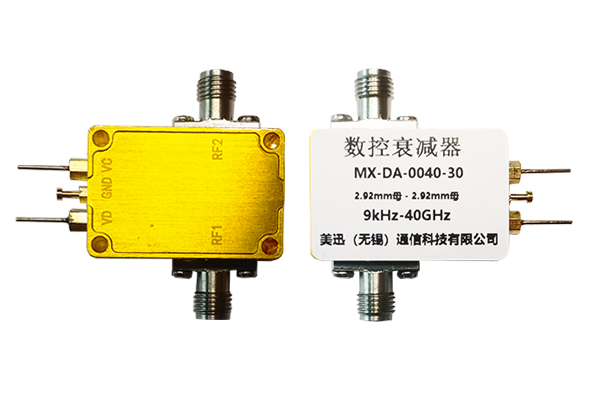
PIN diodes have evolved into key components for microwave and RF applications due to their built-in device properties Their high-speed switching performance and low capacitance along with negligible insertion loss position them well for switch modulator and attenuator implementations. The essential process enabling PIN diode switching is manipulating current through the diode using a biasing voltage. Voltage bias impacts the depletion layer width across the junction and consequently the conduction. By varying the bias level PIN diodes can be reliably switched to operate at high frequencies with low distortion
PIN diodes find placement inside complex circuit frameworks when precise timing and control is required They are suited to RF filtering arrangements for selective band pass and band stop operations. Their capability to tolerate high-power signals allows deployment in amplifiers power dividers and generator equipment. Smaller, more efficient PIN diodes have expanded their application scope in wireless communications and radar technologies
Coaxial Switch Design Principles and Analysis
The design of coaxial switches is intricate and needs detailed assessment of numerous variables The performance is governed by the choice of switch type frequency operation and insertion loss properties. A good coaxial switch design aims to minimize insertion loss and maximize isolation across ports
Evaluation focuses on quantifying return loss insertion loss and interport isolation as major metrics. Evaluation is achieved through simulation studies analytical models and hands on experiments. Thorough analysis is critical for confirming reliable coaxial switch performance
- Simulation tools analytical methods and experimental techniques are frequently used to study coaxial switch behavior
- Switch performance may be significantly affected by thermal conditions impedance mismatches and production tolerances
- Emerging developments and novel techniques in switch design concentrate on boosting performance while minimizing footprint and energy use
Design Strategies for Low Noise Amplifiers
Improving LNA performance efficiency and gain is key to maintaining high signal fidelity across applications Achieving results demands careful transistor picks optimized bias settings and considered topology design. Well engineered LNA circuits reduce noise influence and increase amplification while controlling distortion. Analytical modeling and simulation utilities are key to predicting how different design options influence noise behavior. Achieving a reduced Noise Figure demonstrates the amplifier’s effectiveness in preserving signal amid internal noise
- Selecting low-noise active devices is central to achieving low overall noise
- Adopting proper optimal biasing is essential to reduce noise creation in devices
- The chosen circuit topology plays a major role in determining noise behavior
Tactics like impedance matching noise mitigation and feedback regulation advance LNA performance
Signal Path Control Using Pin Diodes

Pin diode switch implementations yield flexible efficient routing of RF signals in diverse applications They can be switched very fast to allow flexible dynamic routing of RF signals. Strong isolation and low insertion loss in PIN diodes contribute to reduced signal degradation. They are applied in antenna selection circuits duplexers and phased array antenna systems
Voltage control varies the device resistance and thus controls whether the path is conductive. While in the off state the diode creates a high impedance path that blocks the signal flow. Applying a forward control voltage lowers the diode’s resistance enabling signal transmission
- Additionally PIN diode switches present fast switching low energy use and compact dimensions
Multiple configurable architectures and design schemes of PIN diode switches facilitate complex routing operations. Combining multiple switch elements makes possible dynamic switching matrices enabling flexible routing
Coaxial Microwave Switch Testing and Evaluation

Testing and assessment of coaxial microwave switches are crucial to ensure efficient operation within systems. Various performance drivers like insertion reflection transmission loss isolation switching speed and bandwidth influence switch behavior. A comprehensive evaluation process involves measuring these parameters under a variety of operating environmental and test conditions
- Further the testing should consider reliability robustness durability and capability to withstand harsh environmental factors
- Ultimately the results of a well conducted evaluation provide critical valuable and essential data to guide selection design and optimization of switches for specific applications
Review of Techniques to Reduce Noise in Low Noise Amplifiers
Low noise amplifier circuits are central to RF systems for enhancing weak signals and limiting internal noise. The paper provides a comprehensive examination analysis and overview of techniques aimed at lowering noise in LNAs. We explore investigate and discuss key noise sources including thermal shot and flicker noise. We additionally survey noise matching feedback circuit methods and optimal biasing approaches to reduce noise. The article highlights recent advances such as novel semiconductor materials and innovative circuit architectures that reduce noise figure. By providing insight into noise minimization principles and practices the review supports researchers and engineers working on high performance RF systems
High Speed Switching Roles of PIN Diodes

PIN diodes’ unique remarkable and exceptional behavior makes them appropriate for fast switching systems Low capacitance and low resistance contribute to very fast switching enabling precise timing control in demanding applications. Further PIN diodes’ proportional response to voltage facilitates exact amplitude modulation and switching control. Their adaptable flexible and versatile nature makes them suitable applicable and appropriate for broad high speed applications Examples include optical communications microwave circuits and signal processing devices equipment and hardware
Integrated Circuit Coaxial Switch Circuit Switching Technology
IC coaxial switch technology represents a major step forward in signal routing processing and handling for electronic systems circuits and devices. Specialized ICs manage control and direct signal transmission through coaxial cables ensuring high frequency performance and minimal propagation latency. Miniaturization through IC integration results in compact efficient reliable and robust designs fit for dense interfacing integration and connectivity scenarios
- By rigorously meticulously and carefully implementing these techniques practitioners can achieve LNAs with remarkable noise performance for sensitive reliable electronics With careful meticulous and rigorous execution of coaxial switch these strategies designers can obtain LNAs exhibiting excellent noise performance for sensitive reliable systems Through careful meticulous and rigorous implementation of these approaches engineers can achieve LNAs with exceptional noise performance supporting sensitive reliable systems With careful meticulous and rigorous deployment of these approaches developers can accomplish LNAs with outstanding noise performance enabling trustworthy sensitive electronics
- Use cases include telecommunications data communications and wireless network infrastructures
- These technologies find application in aerospace defense and industrial automation fields
- Consumer electronics audio video systems and test and measurement platforms incorporate IC coaxial switches
Designing LNAs for Millimeter Wave Frequencies

mmWave LNA challenges include significant signal attenuation and greater sensitivity to noise sources. At high mmWave frequencies parasitic capacitances and inductances can dominate requiring precise layout and part selection. Keeping input mismatch low and power gain high is critical essential and important in mmWave LNA designs. The selection of HEMTs GaAs MESFETs and InP HBTs substantially impacts attainable noise figures at mmWave. Additionally the careful design and optimization of matching networks is essential to ensure efficient power transfer and good impedance match. Consideration of package parasitics is required because they may adversely impact LNA performance at mmWave. Selecting low-loss transmission paths and optimal ground plane layouts is essential necessary and important for reducing reflection and preserving bandwidth
PIN Diode RF Switching Characterization and Modeling
PIN diodes exist as key components elements and parts in several RF switching applications. Thorough precise and accurate characterization of these devices is essential for designing developing and optimizing reliable high performance circuits. Part of the process is analyzing evaluating and examining their electrical voltage current characteristics like resistance impedance and conductance. Their frequency response bandwidth tuning capabilities and switching speed latency or response time are likewise measured
Additionally the development of accurate models simulations and representations for PIN diodes is vital essential and crucial for predicting their behavior in RF systems. Numerous available modeling techniques include lumped element distributed element and SPICE approaches. Model selection is guided by specific application requirements and the desired required expected accuracy
Sophisticated Techniques to Achieve Minimal LNA Noise
LNA design is a critical undertaking that demands precise attention to topology and parts selection to achieve low noise. Recent emerging and novel semiconductor progress has enabled innovative groundbreaking sophisticated design approaches that reduce noise markedly.
Representative methods consist of using implementing and utilizing wideband matching networks selecting low-noise transistors with high intrinsic gain and optimizing biasing schemes strategies or approaches. Additionally furthermore moreover advanced packaging and thermal management techniques are important to lower external noise sources. With careful meticulous and rigorous deployment of these approaches developers can accomplish LNAs with outstanding noise performance enabling trustworthy sensitive electronics
